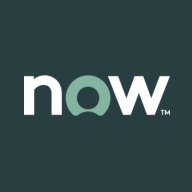

Stackify and ServiceNow Cloud Observability offer advanced tools for monitoring and managing application performance. Stackify’s pricing and support give it an edge, while ServiceNow Cloud Observability distinguishes itself with its feature set, justifying its higher price.
Features: Stackify is known for its intuitive setup, comprehensive logging features, and ease for developers to track issues. ServiceNow Cloud Observability is praised for its extensive integration capabilities, powerful analytics, and advanced features. While Stackify focuses on simplicity, ServiceNow caters to more complex needs.
Room for Improvement: Users suggest Stackify could improve its documentation, offer more customizable dashboards, and enhance usability. ServiceNow Cloud Observability could improve performance metrics, user training materials, and metrics accuracy.
Ease of Deployment and Customer Service: Stackify users find deployment straightforward and commend its responsive customer service. ServiceNow Cloud Observability has a steeper learning curve but benefits from robust support and detailed deployment guides. Stackify is easier to deploy, while ServiceNow provides comprehensive support despite its complexity.
Pricing and ROI: Stackify is appreciated for its cost-effectiveness and quick return on investment. ServiceNow Cloud Observability delivers substantial ROI through advanced features, justifying its higher costs. Stackify offers an accessible pricing model, whereas ServiceNow includes powerful, feature-rich offerings.
| Product | Market Share (%) |
|---|---|
| ServiceNow Cloud Observability | 0.5% |
| Stackify | 0.4% |
| Other | 99.1% |


| Company Size | Count |
|---|---|
| Small Business | 3 |
| Midsize Enterprise | 2 |
| Large Enterprise | 2 |
ServiceNow Cloud Observability is a comprehensive platform designed to enhance visibility, control, and performance monitoring of your IT infrastructure and applications. It seamlessly integrates log management, trace management, metrics monitoring, and infrastructure monitoring in real-time, leveraging AI and machine learning for automated tasks and actionable insights. With benefits including improved visibility, faster incident resolution, enhanced application performance, simplified IT operations, and reduced costs, this cloud-native solution is ideal for businesses of all sizes with complex IT infrastructures. It integrates seamlessly with ServiceNow IT Operations Management (ITOM), supports OpenTelemetry standards, and provides AI-powered insights along with pre-built dashboards and reports.
Stackify is an application performance management (APM) solution that combines application performance monitoring with logs, errors, and reporting. It is a SaaS solution that is developer-focused. Users can quickly scan, identify, and repair issues with applications. Stackify APM offers valuable tools, such as Prefix and Retrace, which help to make it a comprehensive and valuable APM solution. Stackify is now part of the Netreo family of IT Infrastructure Management (ITIM), which is considered one of the fastest-growing IT organizations in the marketplace today.
Stackify Prefix
Stackify Prefix helps developers write better code, faster. The tool examines, tests, and approves code as it is being written. Almost every new application is code-perfect, negating the need for exhausting troubleshooting and frustrating time-consuming code review.
Prefix is able to discover poor-performing SQL queries, ORM queries, potential bottlenecks, and concealed exceptions prior to moving the application into production.
Prefix offers Summary Dashboards, intuitive suggestions, integrated logs, and distributed tracing. Distributed tracing expands visibility to cloud-native applications, microservices, and containers and can also provide additional transparency to cache services, web services, third-party services, and more. Users are able to easily move from logs to traces and back.
This valuable tool ensures developers are able to consistently release the best code possible in the least amount of time, while improving performance, productivity, and profitability.
Prefix is a very robust and easy-to-use tool. It can be used seamlessly with Linux, macOS, and Windows. Prefix integrates well with numerous languages, such as Java, Python, Ruby, PHP, Node.js, .Net, and .Net Core.
Stackify Retrace
Stackify Retrace is a user-friendly, trusted APM solution used in more than fifty countries worldwide. Users know that Retrace is able to ensure they can complete quicker, more efficient application development and consistently enhance overall application performance by suggesting important intuitive suggestions users need.
This solution is beneficial to both developers (Dev) and operations (Ops) personnel to learn to improve code and immediately finetune issues by:
Retrace Real User Monitoring (RUM) uses both front-end and back-end monitoring to give users a complete picture of what is going on with the applications. This intuitive dashboard displays performance with a complete breakdown of resource usage and integrates the server-side and client traces into one engaging, user-friendly, extensive view.
Retrace is an out-of-the-box solution that works seamlessly with Java stacks, PHP, Node.js, Ruby, Python, .Net, and .Net Core. It is also compatible with many of today’s popular frameworks, such as AWS, Azure, Elasticsearch, MongoDB, MySQL, Oracle, PostgreSQL, Redis, and SQL Server. Additionally, Retrace will work effectively with many cloud providers, containers, and languages, and offers excellent and easy integration with today's favorite tools such as Jira, Slack, Jenkins, and more.
We monitor all Application Performance Monitoring (APM) and Observability reviews to prevent fraudulent reviews and keep review quality high. We do not post reviews by company employees or direct competitors. We validate each review for authenticity via cross-reference with LinkedIn, and personal follow-up with the reviewer when necessary.